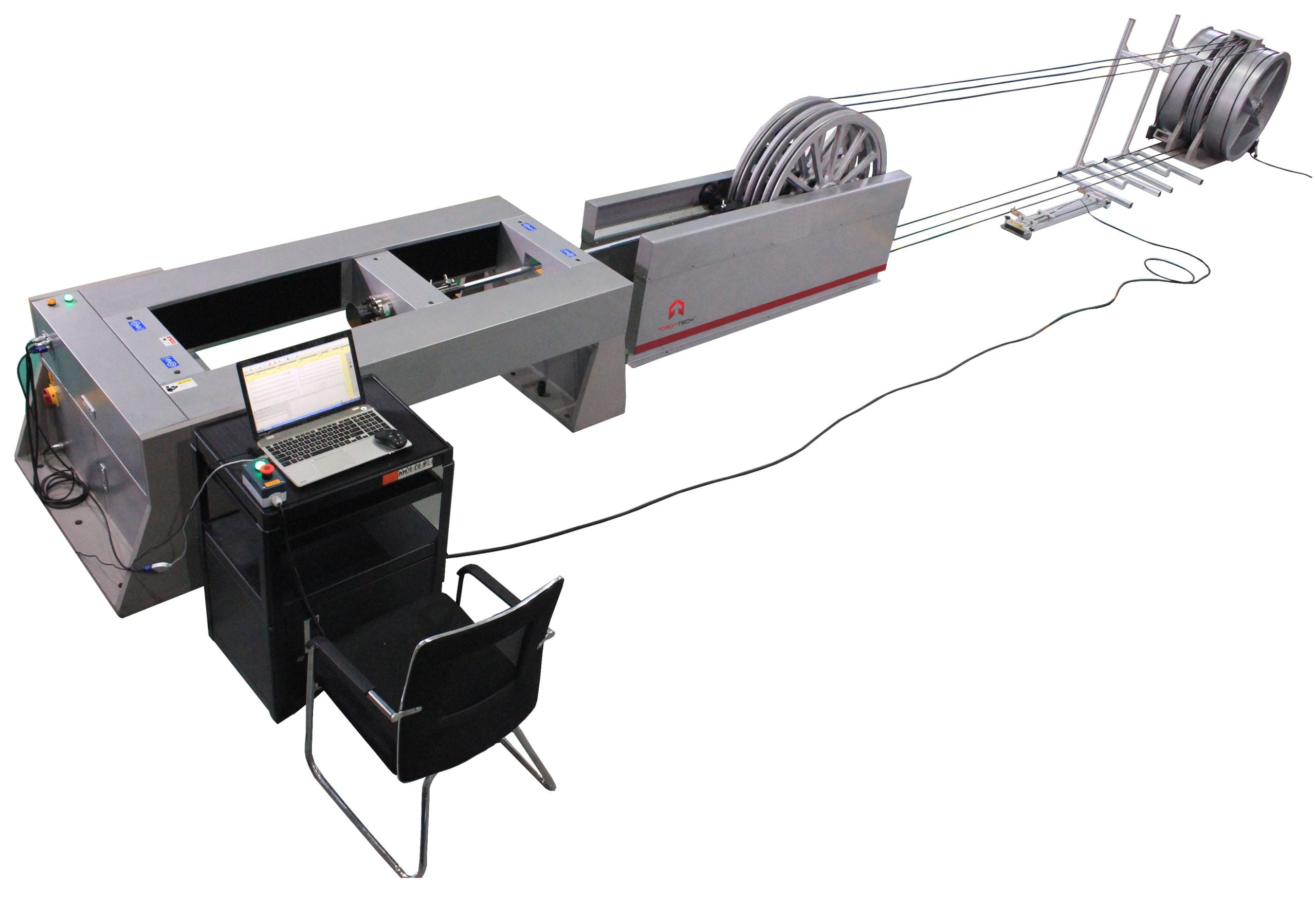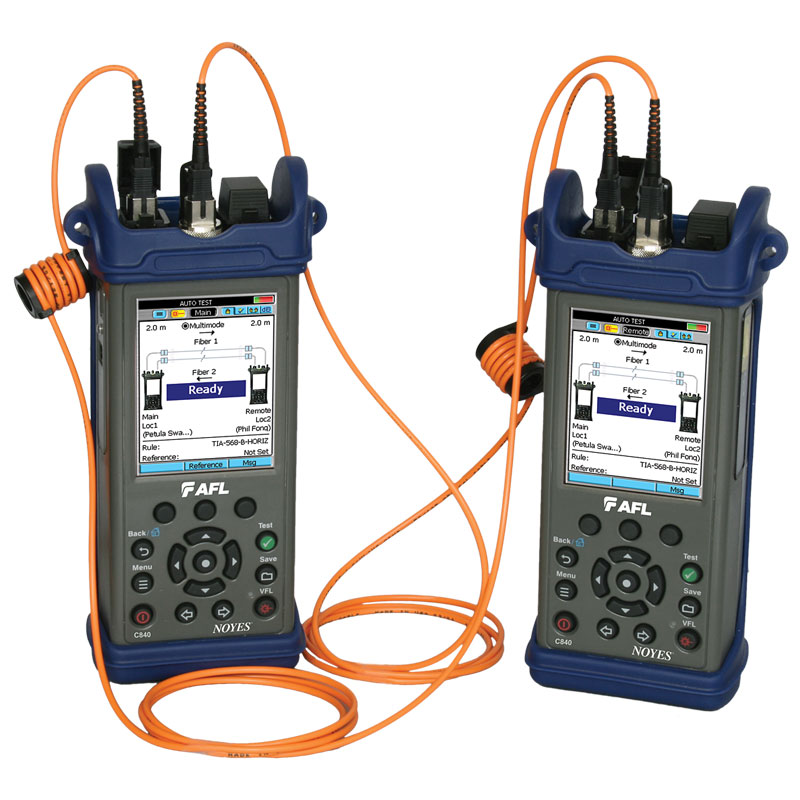The optical fibre diameter analyser provides precise measurements for fibre optics.
The optical fibre diameter analyser provides precise measurements for fibre optics.
Blog Article
The Function of Optical Fiber Screening in Ensuring Quality and Effectiveness in Connection Solutions
In today's rapidly advancing digital landscape, the significance of optical fibre testing can not be overemphasized, as it acts as a keystone for making certain the quality and efficiency of connectivity options. By using a series of testing approaches, consisting of OTDR and loss analyses, organizations can proactively identify and reduce potential network issues that may impede performance. Routine testing not just lines up with market standards yet additionally paves the way for boosted information transmission. As modern technology proceeds to advancement, the future of optical fibre screening poses fascinating obstacles and opportunities that merit closer evaluation.
Value of Optical Fibre Testing
The importance of optical fiber testing can not be overstated in making certain the stability and efficiency of communication networks. As the foundation of contemporary telecommunications, optical fibers help with high-speed data transmission, making their dependability important to operational success. Evaluating functions as a positive step to recognize prospective issues such as signal loss, depletion, and physical damage, which can endanger network efficiency.
Regular screening enables for the confirmation of installation top quality and the detection of defects that could affect information stability - optical fibre diameter analyser. By utilizing rigorous testing methods, network drivers can reduce the risks associated with network failings, including downtime and financial losses. In addition, optical fibre screening makes certain compliance with market criteria and regulations, enhancing the general quality of service supplied to end-users.
Ultimately, the systematic analysis of optical fibers adds to the durability and effectiveness of interaction systems. It allows stakeholders to make informed decisions regarding upkeep, upgrades, and troubleshooting. In a landscape where information is significantly essential, focusing on optical fibre testing is necessary to maintaining durable and effective connectivity remedies, therefore sustaining the demands of contemporary electronic settings.
Sorts Of Optical Fiber Tests
Numerous screening techniques are employed to make certain the capability and integrity of optical fibers within interaction networks. These tests can be generally classified into 2 primary types: installment tests and upkeep tests.
Installation examinations are conducted instantly after the installation of optical fiber cables to validate their efficiency and integrity - ofda. One of the most usual setup tests consist of Optical Time-Domain Reflectometry (OTDR) tests, which examine the quality of the fiber by identifying mistakes or breaks, and end-to-end loss tests, which gauge the total optical loss from one end of the fiber to the other
Maintenance examinations, on the other hand, are performed occasionally to make certain continuous performance and detect possible concerns in time. These include visual inspection, which look for physical damages or incorrect installations, and connection examinations, which verify that the signal can travel through the fibre without interruption.
In addition, progressed examinations such as Polarization Setting Diffusion (PMD) and Chromatic Dispersion (CD) tests can be performed to assess the fiber's efficiency under numerous problems. By utilizing these diverse testing techniques, professionals can keep high standards of high quality and reliability in optical fibre networks.
Advantages of Normal Testing
Normal screening of optical fibers plays an important function in keeping the overall performance and reliability of communication networks. By carrying out normal assessments, organizations can make sure that their fiber optic installations satisfy sector standards and operate successfully. This proactive technique aids to identify prospective weak points and deterioration with time, enabling prompt treatments before problems intensify.

Cost-effectiveness is another benefit. By attending to minor issues early, organizations can stay clear of the high prices connected with major repairs or system failures. Normal screening additionally cultivates conformity with regulative demands, making sure that the network sticks to required safety and efficiency requirements.
Typical Problems Identified
Identifying typical problems in optical fiber networks is necessary navigate here for preserving optimal efficiency and reliability. Different elements can add to disruptions, consisting of physical damages, inadequate installment techniques, and ecological influences.
Physical damage, such as bends, breaks, or abrasions, can dramatically break down signal quality. Inappropriate setup strategies, consisting of extreme tension or poor protecting of cable televisions, might cause increased depletion and loss of connection. Additionally, ecological aspects such as temperature changes, moisture access, and rodent disturbance can compromise the honesty of the fiber.
Port problems also frequently occur, with incorrect alignment or contamination resulting in increased insertion loss. Splicing mistakes can present substantial signal degradation if not implemented with precision.

Attending to these typical issues via routine optical fibre testing not just boosts network dependability however likewise optimizes overall efficiency, making certain that connection services remain robust and reliable.
Future Trends in Testing
As the demand for high-speed connection proceeds to climb, the future of optical fibre screening will significantly concentrate on automation and progressed analytics. The combination of expert system (AI) and equipment learning (ML) in screening procedures will certainly enable more effective data evaluation and predictive maintenance, minimizing downtime and enhancing total network dependability. Automated screening services will enhance the evaluation and certification of fibre networks, decreasing human mistake and boosting screening throughput.
An additional substantial trend is the adoption of remote testing technologies. As the deployment of fibre networks expands into remote and underserved areas, remote testing capabilities will permit technicians to keep track of and diagnose network conditions without physical presence, thereby reducing functional prices and boosting action times.
Moreover, there will certainly be a shift towards more comprehensive screening requirements that include not only traditional loss measurements yet additionally performance metrics such as latency and bandwidth utilization. This holistic strategy will certainly help with better network management and optimization approaches.
As these fads progress, the optical fibre screening landscape will certainly not only boost the top quality and effectiveness of connectivity solutions yet go to this website likewise support the expanding intricacies of contemporary communication networks.
Conclusion
In conclusion, optical fiber screening offers as an essential component in maintaining the integrity and performance of communication networks. The ongoing dedication to routine testing not just improves like it information transmission but additionally straightens with industry requirements, cultivating reliability in network infrastructures.
Report this page